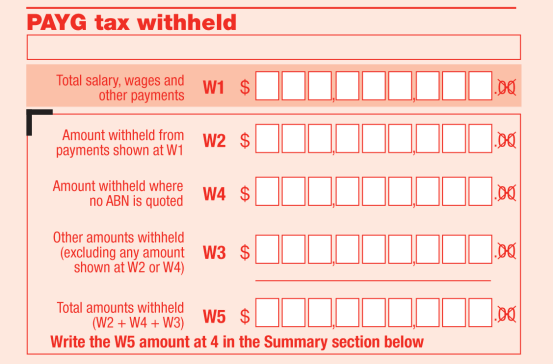One of the questions I get from clients frequently is: what’s the difference between PAYG withholding & PAYG Income Tax Instalments? This is especially confusing for business owners who have never paid these taxes before and are new to the PAYG system. So what are these two taxes about and how do they affect your business?

As mentioned above, PAYG withholding (PAYG WH) and PAYG Income Tax Instalments (PAYG ITI) are both types of tax. To explain the difference between them simply, PAYG WH relates to employees’ (and others’) income tax while PAYG ITI relates to your own income tax (or that of your company). Let me explain the difference in more detail here:
PAYG Withholding
 PAYG WH is generally tax withheld from employees’ salaries or wages BUT it can also be withheld from suppliers who have not provided their Australian Business Number (ABN) to you or from contractors with whom you’ve entered into voluntary agreements to withhold amounts from your payments to them.
PAYG WH is generally tax withheld from employees’ salaries or wages BUT it can also be withheld from suppliers who have not provided their Australian Business Number (ABN) to you or from contractors with whom you’ve entered into voluntary agreements to withhold amounts from your payments to them.
What you need to know about PAYG WH
*You need to register for PAYG WH before you begin to withhold payments (or as soon as you become aware that you need to withhold)
*PAYG WH amounts are reported on your business activity statement (BAS)
*Payments of PAYG WH to the ATO are made monthly, quarterly or more often depending on the size of your business
*You must provide payment summaries to your employees (and others if applicable) by 14 July each year
*You must provide the PAYG WH Payment Summary Annual Report to the Australian Tax Office (ATO) by 14 August each year
PAYG Income Tax Instalments


PAYG ITI are payments in advance for individual and/or company income taxes and are paid by business owners, investors and sub-contractors who earn a certain amount of income. Paying PAYG ITI assists you to meet your income tax obligations by allowing you to make payments in advance quarterly instead of having to make one lump sum payment at year’s end i.e. this assists with cash flow. When your income tax return is lodged, the resulting income tax payable is reduced by your PAYG ITI. If you haven’t paid enough tax during the year, then you will have to pay the balance owed but if you have paid too much, then you will receive a refund.
Note: there are two options for reporting your PAYG ITI on your BAS and you can read about them in our blog called “BAS Labels Explained Part 2”.
What you need to know about PAYG ITI
*The ATO will write to you to tell you if you need to pay PAYG ITI
*Payments begin from the second year of business
*The amount you will pay is based on your most recently lodged income tax return
*PAYG ITI amounts are reported on your activity statement (or pre-printed on your BAS)
*Amounts are paid quarterly via the BAS
*Both business and investment income is taken into consideration in relation to ascertaining how much will be paid to the ATO
Both PAYG WH and PAYG ITI are taxes you may encounter whilst conducting your business. Confusion about the two taxes may arise mainly due to the similarity of their names. However, it is important to know the difference between them and to understand how they will affect your business especially in terms of cash flow.
